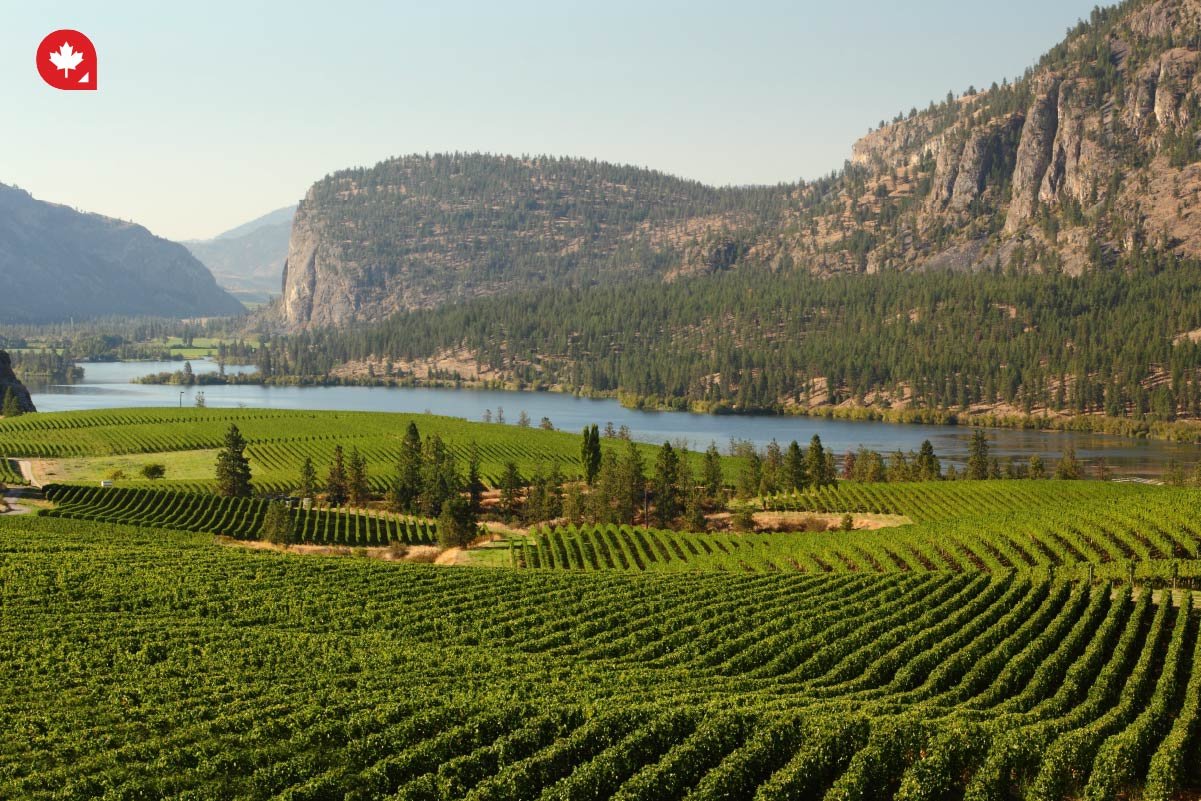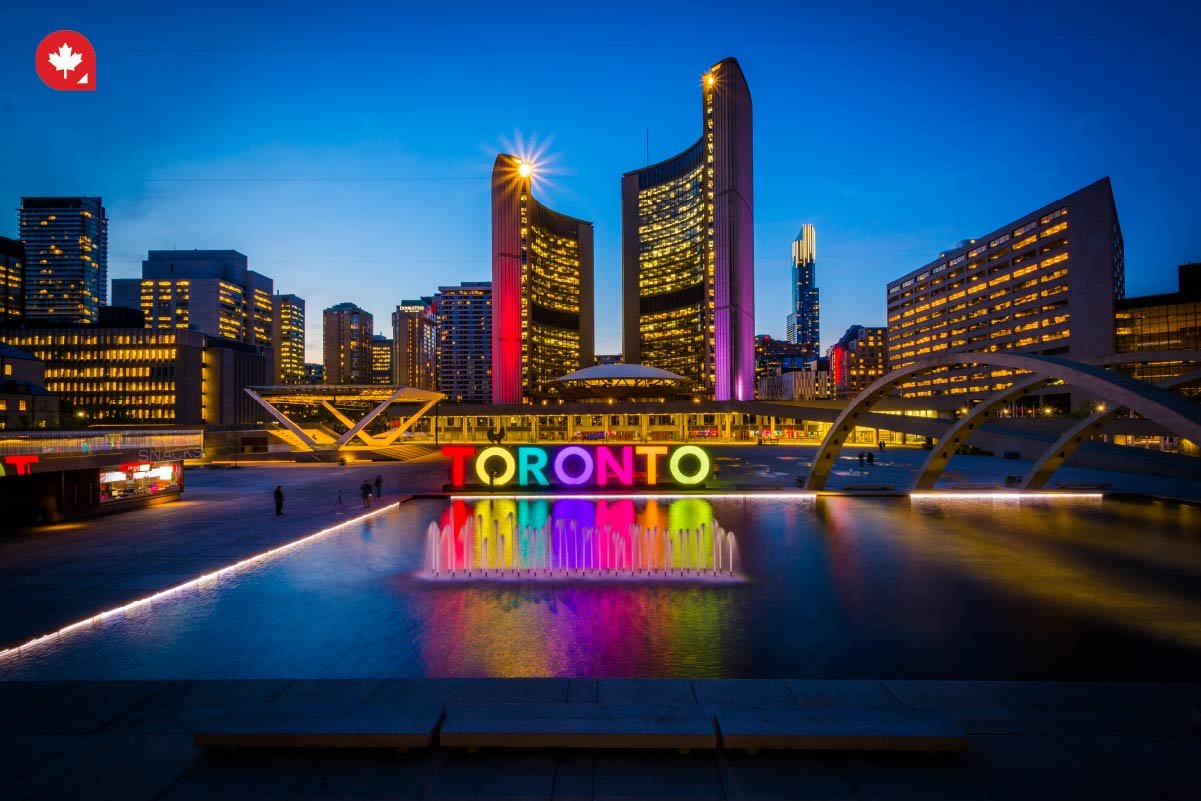Canada, a vast and diverse country, offers various living experiences. From the bustling metropolises of Toronto and Montreal to the wide-open spaces of the Canadian prairies, deciding where to settle can be a significant hurdle when you immigrate to Canada.
We’ll take you through the contrasting landscapes of urban and rural Canada and help you navigate the pros and cons of each lifestyle to find your perfect Canadian dream.
So, how different is life in urban vs rural Canada? It all boils down to convenience versus connection.
Bustling Canadian cities offer a smorgasbord of restaurants, shops, and cultural events, all accessible with a tap on your phone or a swipe of your transit pass. In contrast, rural Canada fosters a deep sense of community, with friendly faces and wide-open spaces.
While urbanites relish anonymity and constant stimulation, rural dwellers enjoy a slower pace and a strong bond with nature. Ultimately, the choice between cityscapes and countryside depends on your desire for hustle or haven.
Canadian Immigration Trends

As the second-largest country in the world, Canada's total area spans nearly 9 million square kilometers. Despite its vast terrain, the majority of Canadians inhabit a handful of urban hubs situated near the United States border, as well as along Lake Ontario and the St. Lawrence River, according to Statistics Canada.
Although rural areas comprise the lion's share of the country's landmass, they host only a fraction of its population. For example, Canada's three predominantly rural territories cover approximately two-fifths (39.1%) of its land area but house a mere 0.3% of its inhabitants.
Where do Newcomers to Canada Tend to Settle?
Canadian immigration trends for urban and rural living indicate a shift towards encouraging settlement in rural areas as part of future immigration strategies. Here are the key points from the search results.
Historically, the settlement location of newcomers in Canada has been predominantly urban, with over 91% of immigrants residing in census metropolitan areas like Toronto, Montreal, and Vancouver.
Recent trends show a movement towards settling outside traditional gateway cities into smaller towns and rural areas due to new policy initiatives like Ontario's Community Immigrant Retention in Rural Ontario and the Provincial Nominee Program.
Immigrants are increasingly choosing rural areas for settlement, driven by greater employment opportunities, lower costs of living, and efforts by small cities and rural areas to attract newcomers.
Challenges in rural areas include a lack of physical infrastructure, social services, and ethnocultural resources, which are crucial for immigrant settlement and well-being
The odds of immigrants moving into rural Canada have decreased over time due to factors like transportation limitations, lack of employment opportunities, academic resources, and potential discrimination.
To address the decline in rural populations and attract immigrants to smaller communities, governments are urged to improve transportation, support immigrant families, enhance cultural life amenities, and increase settlement services in rural areas.
These trends highlight a growing interest in promoting immigration to rural Canada to revitalize these areas and address demographic challenges.
Urban Energy
Canadian cities are vibrant cultural, commerce, and opportunity hubs. Toronto, Vancouver, and Calgary boast booming job markets, attracting professionals in finance, technology, and healthcare sectors. These dynamic centers offer a wealth of amenities: world-class museums, renowned restaurants, and diverse entertainment options. Social life thrives in these urban jungles, with many bars, cafes, and community events fostering connections.
If you want to live and work in Canada, you should note that city life comes with its own challenges. The cost of living in major Canadian cities can be quite high, especially when it comes to housing. Traffic congestion can be a daily annoyance, and the fast-paced environment can be overwhelming for some. Access to green spaces can also be limited, requiring intentional effort to connect with nature.
Rural Tranquility
Rural Canada offers a stark contrast to the urban experience. Imagine vast landscapes, starry night skies, and a slower pace. Rural communities, often concentrated in provinces like Alberta, Saskatchewan, and Manitoba (collectively known as the Canadian prairies), foster a strong sense of community. Neighbors become like family, and a spirit of helpfulness and shared traditions permeate daily life.
Living in rural Canada provides unparalleled access to nature, with opportunities for hiking, fishing, and simply enjoying the peace of the outdoors.
As with all settings, rural living also presents unique challenges. Job opportunities can be limited, often concentrated in agriculture, resource extraction, or small businesses. Access to specialized services like healthcare professionals may require travel to larger towns. Entertainment options and social circles also tend to be smaller in rural areas, requiring greater self-reliance and initiative to stay connected.
Urban vs. Rural: A Tale of Two Canadas

The choice between urban and rural life in Canada boils down to individual priorities. Let's take a deeper look into specific aspects to understand the key differences.
Healthcare
Healthcare services in major Canadian cities boast diverse specialists and cutting-edge facilities, providing residents with comprehensive medical care. In contrast, rural regions have historically faced challenges in accessing healthcare due to geographic isolation and limited resources. Nevertheless, there is a growing trend towards enhancing healthcare access in rural areas through innovative initiatives.
One such initiative involves:
- Implementing telehealth services.
- Allowing rural residents to consult with healthcare professionals remotely.
- Bridging the gap between them and urban medical expertise.
More community clinics are also being established in rural locales, providing essential healthcare services closer to home. These clinics not only address immediate medical needs but also foster a sense of community well-being by promoting preventive care and health education initiatives.
While the disparity in healthcare resources between urban and rural areas persists, ongoing efforts to bolster healthcare infrastructure and services in rural Canada are steadily closing the gap, ensuring that all Canadians have access to quality healthcare regardless of their geographic location.
Learn more about healthcare in Canada.
Education
Both urban and rural areas in Canada are committed to delivering high-quality public education, ensuring that students receive a solid foundation for their academic pursuits. Despite this shared dedication to education, urban centers hold a distinct advantage regarding educational diversity and choice.
In major cities nationwide, a higher concentration of private schools and esteemed universities widens the educational opportunities available to residents. These institutions offer specialized academic programs, access to state-of-the-art facilities, and renowned faculty members, attracting students from diverse backgrounds seeking a tailored educational experience.
While rural areas may have fewer private schools and universities in comparison, efforts are underway to enhance educational access and quality through collaborative initiatives and innovative teaching methods. Community-driven programs and partnerships with urban educational institutions aim to enrich the learning experiences of rural students, ensuring that they, too, have access to a diverse and enriching educational environment.
While urban centers may offer a broader array of educational choices, urban and rural regions are committed to nurturing their residents' intellectual growth and development, equipping them with the knowledge and skills needed to succeed in an ever-evolving world.
Learn more about education in Canada.
Employment
Urban centers serve as bustling hubs of economic activity, offering diverse employment opportunities across various industries. In these dynamic metropolitan areas, individuals can explore a broad spectrum of job roles, ranging from high-skilled professions in finance, technology, and healthcare to service-oriented positions in hospitality, retail, and entertainment.
The employment landscape in rural areas presents a different set of challenges and opportunities. While job opportunities may be more limited than urban centers, rural residents often find innovative ways to create employment opportunities for themselves and others. Entrepreneurship flourishes in rural communities, with individuals leveraging local resources and talents to establish small businesses that cater to niche markets or fulfill essential needs within the community.
The rise of remote work has opened up new avenues for employment in rural areas. With advancements in technology and communication infrastructure, individuals living in remote regions can now access job opportunities beyond geographical constraints. Remote work offers flexibility and autonomy and allows individuals to remain connected to their rural roots while participating in global industries and markets.
Adaptability is key in both urban and rural employment landscapes. While urban centers may offer a broader range of job opportunities, rural residents can thrive by embracing entrepreneurship and remote work or skillfully navigating their local communities' available industries. Ultimately, the diversity of employment options across urban and rural areas contributes to the richness and resilience of Canada's workforce.
Learn more about the top in-demand jobs in Canada.
Cost of Living
Regarding the cost of living, there's a notable contrast between urban and rural Canada, largely influenced by the employment landscape in each setting.
In urban centers, abundant job opportunities, especially in high-skilled professions, often translate to higher salaries and wages. However, this comes with a trade-off, as the cost of housing, transportation, and other essentials tends to be higher in urban areas. Residents often have to deal with steep rent or mortgage payments and increased expenses for everyday goods and services.
On the flip side, rural areas present a different economic dynamic. While job opportunities may be more limited, residents can explore entrepreneurship, engage in remote work, or adapt to the available industries. This flexibility can lead to a lower cost of living in rural settings, with more affordable housing options and a generally lower overall expense for day-to-day necessities.
While urban Canada offers a broader spectrum of job opportunities, the higher cost of living may offset some financial advantages. Rural Canada provides a more affordable lifestyle with fewer employment options requiring a different approach to earning a living. Understanding these differences is crucial for individuals seeking to strike a balance between career opportunities and financial stability in their chosen living environment.
Learn more about the cost of living in Canada.
Transport
Urban and rural Canada offer contrasting transportation experiences. Public transportation networks are well-developed in major cities, allowing for easy navigation without a car. Walking, cycling, and using subways, buses, or streetcars are convenient options. Traffic congestion can be a major issue in urban areas, impacting commute times and overall travel experience.
Owning a car is almost essential in rural areas due to limited or non-existent public transportation options. While gas prices may vary across regions, the reliance on private vehicles can add to transportation costs. The freedom and flexibility of having a car are advantages in rural settings, though.
Canadian Immigration Options to Consider
There are over 80 ways to immigrate to Canada with the freedom to live anywhere in the country as a permanent resident after successfully achieving a skilled worker visa. Express Entry is great if you want to move to Canada within six months, while Canada's Provincial Nominee Program (PNP) is great if you want to move to a specific province. Let's take a look at each one.
Express Entry
The Express Entry system comprises three main immigration programs:
- The Federal Skilled Worker Program (FSWP)
- The Federal Skilled Trades Program (FSTP)
- The Canadian Experience Class (CEC)
Under the Express Entry system, candidates are evaluated based on various factors such as age, education, work experience, language proficiency, and adaptability. Points are awarded for each factor, with candidates entering a pool of applicants where they are ranked against one another via the Comprehensive Ranking System (CRS).
Those with the highest CRS scores receive Invitations to Apply (ITAs) for permanent residency during regular draws conducted by Immigration, Refugees, and Citizenship Canada (IRCC). Once an ITA is received, candidates have a specified timeframe for submitting their complete application for permanent residency.
Provincial Nominee Program (PNP)
Canada's Provincial Nominee Program (PNP) offers another avenue for individuals seeking immigration opportunities tailored to specific provinces or territories. Established to address each region's unique economic and demographic needs, the PNP allows provinces and territories to nominate individuals with the skills, experience, and attributes required to contribute to their local economies and communities.
Each province and territory in Canada operates its own distinct PNP, with eligibility criteria and application processes tailored to reflect the unique priorities and industries of the region. Through the PNP, provinces and territories can target specific occupations or skill sets that are in demand within their jurisdictions.
We've compiled a list of some of the PNP streams offered by these smaller rural provinces/territories that you can check your eligibility for.
| PNP Streams | |
|---|---|
| Province | Programs |
| Nova Scotia |
|
| Prince Edward Island |
|
| New Brunswick |
|
| Newfoundland & Labrador |
|
| Northwest Territories |
|
| Yukon |
|
Bridging the Divide Between Urban and Rural Canada

Efforts are underway to bridge the economic gap between urban and rural Canada. PNPs are designed to attract skilled immigrants to settle in smaller communities, bolstering their workforce and economic development. Government initiatives aim to improve infrastructure connectivity and access to technology in rural areas, fostering greater integration and opportunity.
Research suggests that Canadians acknowledge the urban-rural divide, but a significant portion believe it's manageable [research findings on urban-rural divide perception]. Fostering dialogue and collaboration between urban and rural communities is crucial to creating a more cohesive and equitable Canada.
Ultimately, Canada's beauty lies in its diverse landscape, mirrored by its contrasting urban and rural lifestyles. Whether you crave the buzz of a city or the serenity of the countryside, Canada offers a place to call home.
FAQs
Is There an Immigration Option Specifically for the Rural Parts of Canada?
Yes. Canada's Rural and Northern Immigration Pilot (RNIP) has effectively bridged the gap between businesses and employers in remote areas and skilled foreign workers to address labor shortages since 2019. This Canadian immigration program is specifically tailored to extend the benefits of economic immigration to smaller communities.
Operated on a community-driven basis, this initiative empowers participating communities to lead in attracting new immigrants. These communities play a pivotal role in matching immigrants with local job vacancies, fostering a welcoming environment, facilitating connections between newcomers and established community members, and local settlement services.
Which Canadian City Has the Largest Population?
The Canadian city with the largest population is Toronto, which is located in the province of Ontario. As Canada's most populous city, Toronto is a vibrant hub of cultural diversity, economic activity, and urban development. With a population of around 2,794,356, Toronto continues attracting residents worldwide, contributing to its dynamic and cosmopolitan atmosphere.




